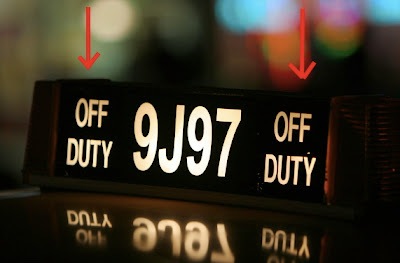So, hearing a rumor that they'd be Opening the baseball season today (after opening it a couple of weeks ago in Japan, and again last night in the nation's capital) Brother J and I went up to the Bronx, in hopes that there would be a game going on...
Cool! Forewarned of the weather conditions, we were wrapped in many layers and sporting ponchos to keep the rain away. Anyway, as you approach the old ballpark in the Bronx these days, you can't help but have your eyes drawn to its replacement, across the street:
At the beginning of last season, this was nothing but an extremely organized set of girders. By October, it looked like an arena, albeit one covered with scaffolding. But now, much of the outer shell of the new Stadium (what you could actually call a facade) looks like a completed product.
Looking up, you can see the lights already installed, and perhaps a hint of the outfield wall frieze (what some incorrectly call the facade):
Perhaps the most interesting touch was the Derek Jeter billboard (actually, one of those cloth screens) that's been set up inside what will be the main entrance.
Having toured the outside, Brother J and I headed in, through what we call the veal fattening pens--the security corrals set up by the left field gate. No matter how I tried, I couldn't get this picture to load rightside-up.
After a lot of waiting, to get to an inconsistent concept of security (we were waved through, without a second look), we finally hit the inside of the House that Ruth Built:
As you can see, the tarp was out, umbrellas were in evidence, and folks other than ourselves were sporting ponchos. When we walked in, the precipitation was nothing more than a strong drizzle. Still, the word being bandied about by the PA announcer and by Yankees apparatchik Michael Kay and John Sterling was that the forecast was favorable, and that the game should start after an hour delay.
With nothing much to do, we went to the escalator area to peek into the new Stadium, where construction workers and random Parks Department folks with Department-issue umbrellas roamed the structure.
Meanwhile, the Yankee Faithful did everything in their power to stay dry and warm during the delay. For folks in the Upper Deck, that meant crowding the concourses up there. For the Bleacher Creatures (OK, faux creatures sitting in the left field bleachers for Opening Day) that meant taking to the slight bit of shelter offered by the bleacher's back wall:
Then, we got the ugly announcement:
Apparently, "evaluating our options" meant sending Joe Girardi, Brian Cashman, and a third man I'm 70% sure was Reggie Jackson out to tour the right field line:
After the game was called, Roy Halladay went out to get his throwing in. Earlier, AJ Burnett and Scott Downs had done a little light throwing. There hadn't been much sign of any Yankees players on the field, at least not while we were waiting.
Halladay had a coach standing in as a batter while he threw from flat ground. The coach didn't mime a swing, but with his legs he made the same weight shift a batter would while waiting for a pitch.
And that was as close to baseball as we got today. Soon, Stadium security was asking us to get moving, tossing us out into the throng trying to make it to the Subway. See you guys tomorrow night!




